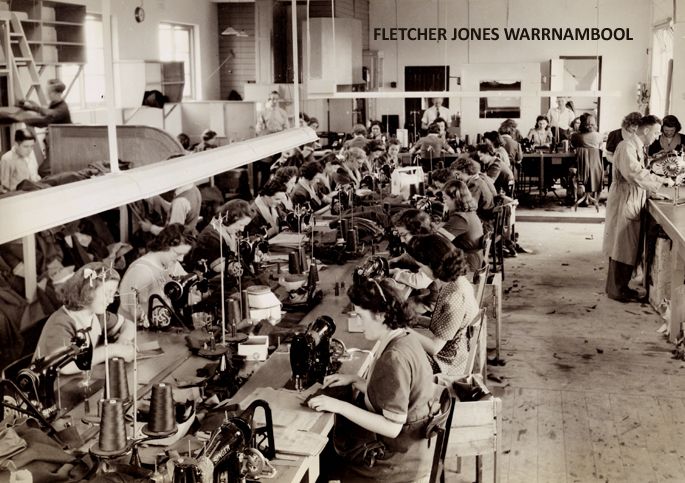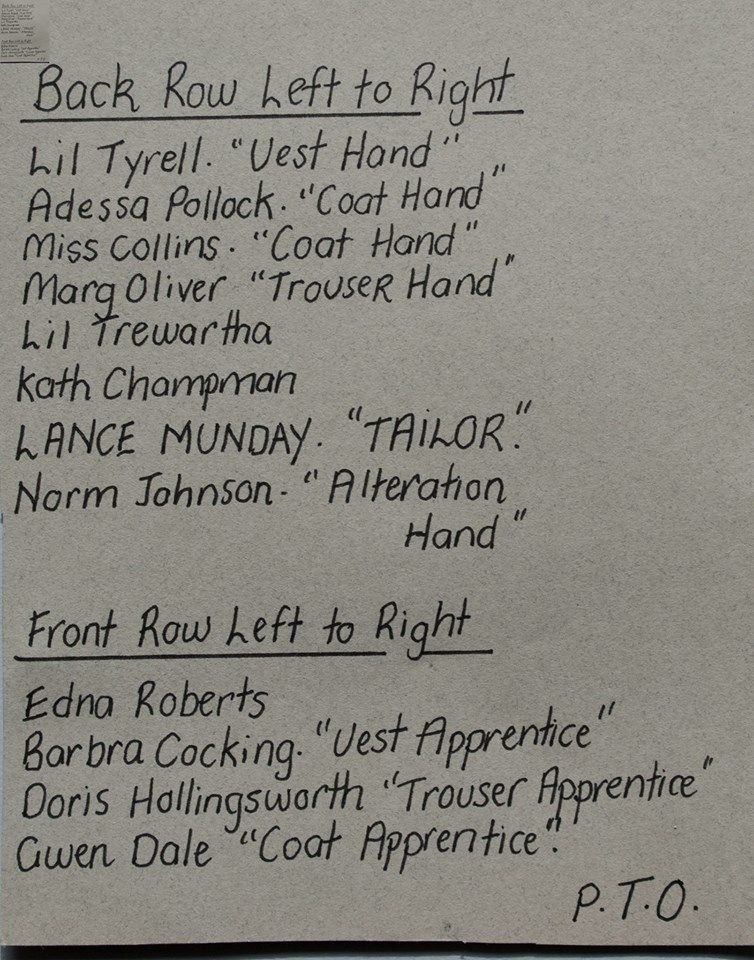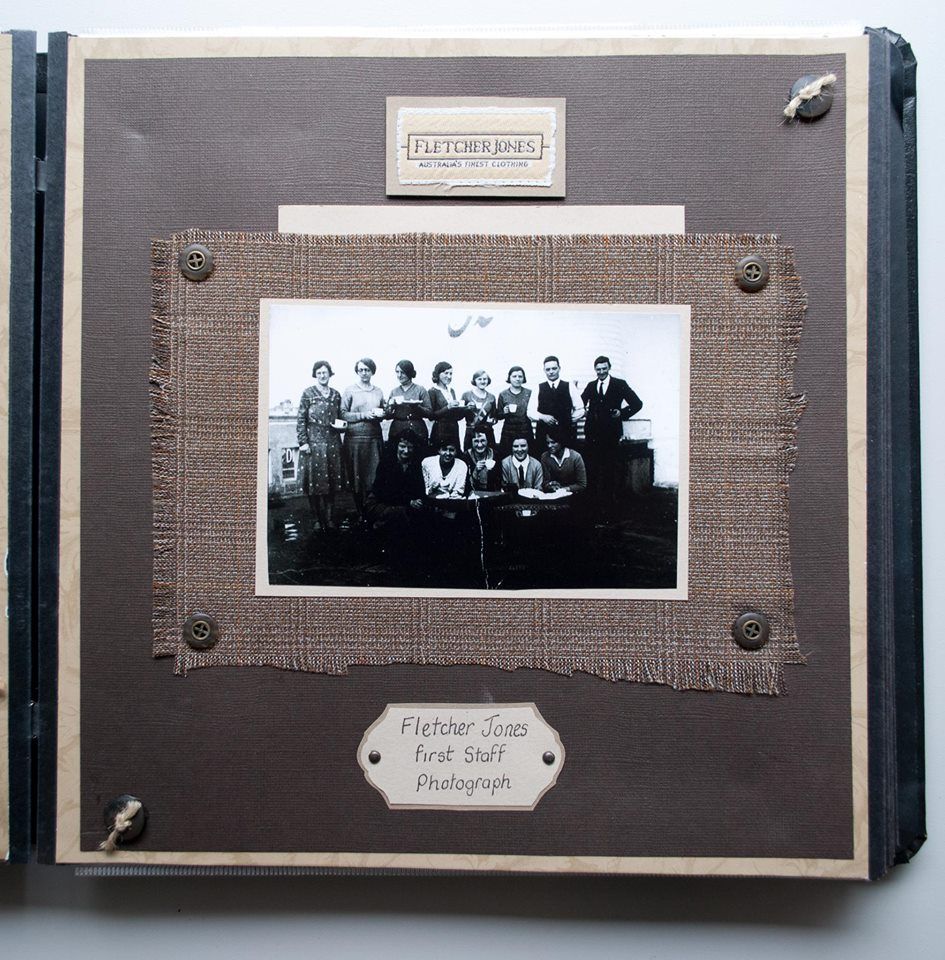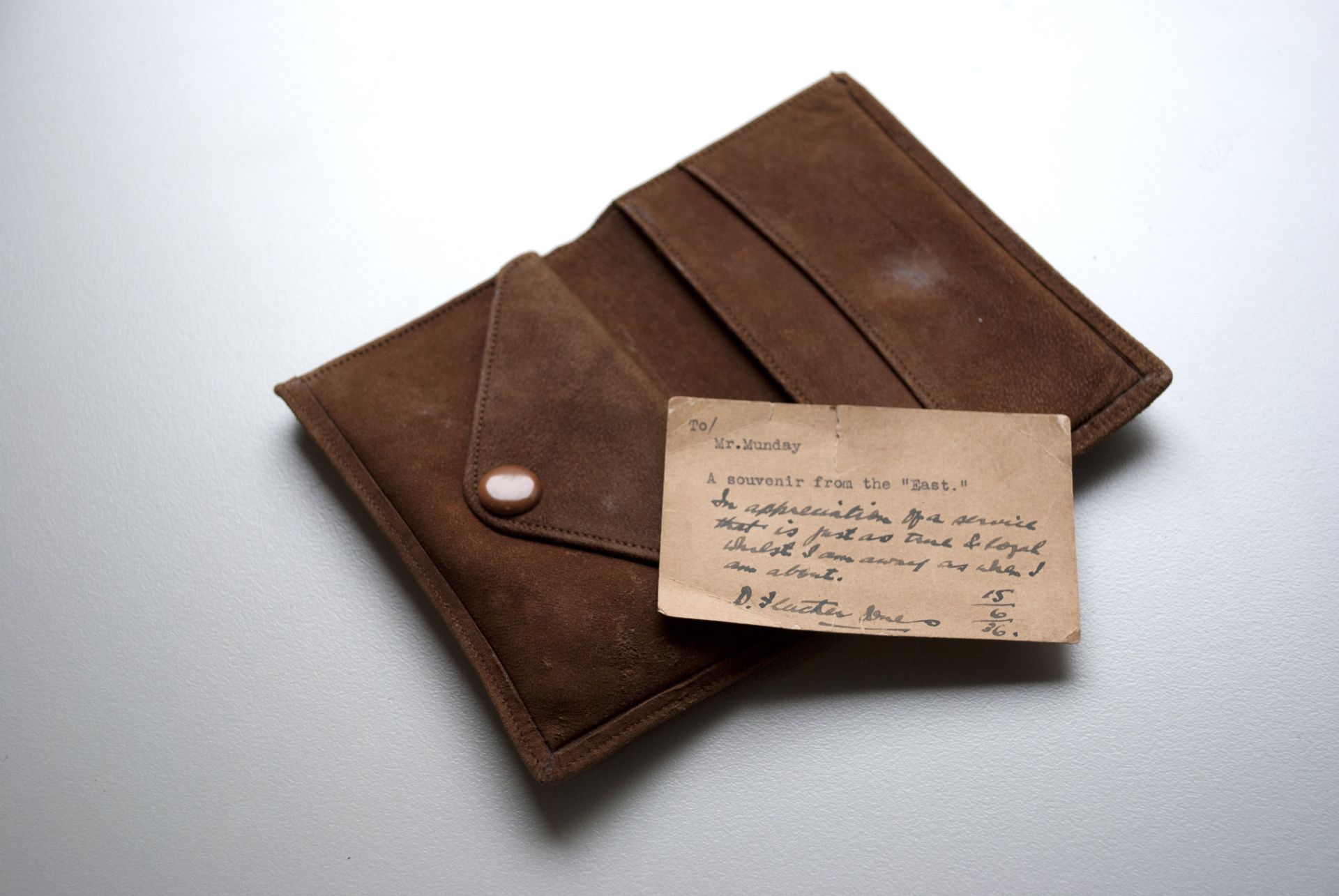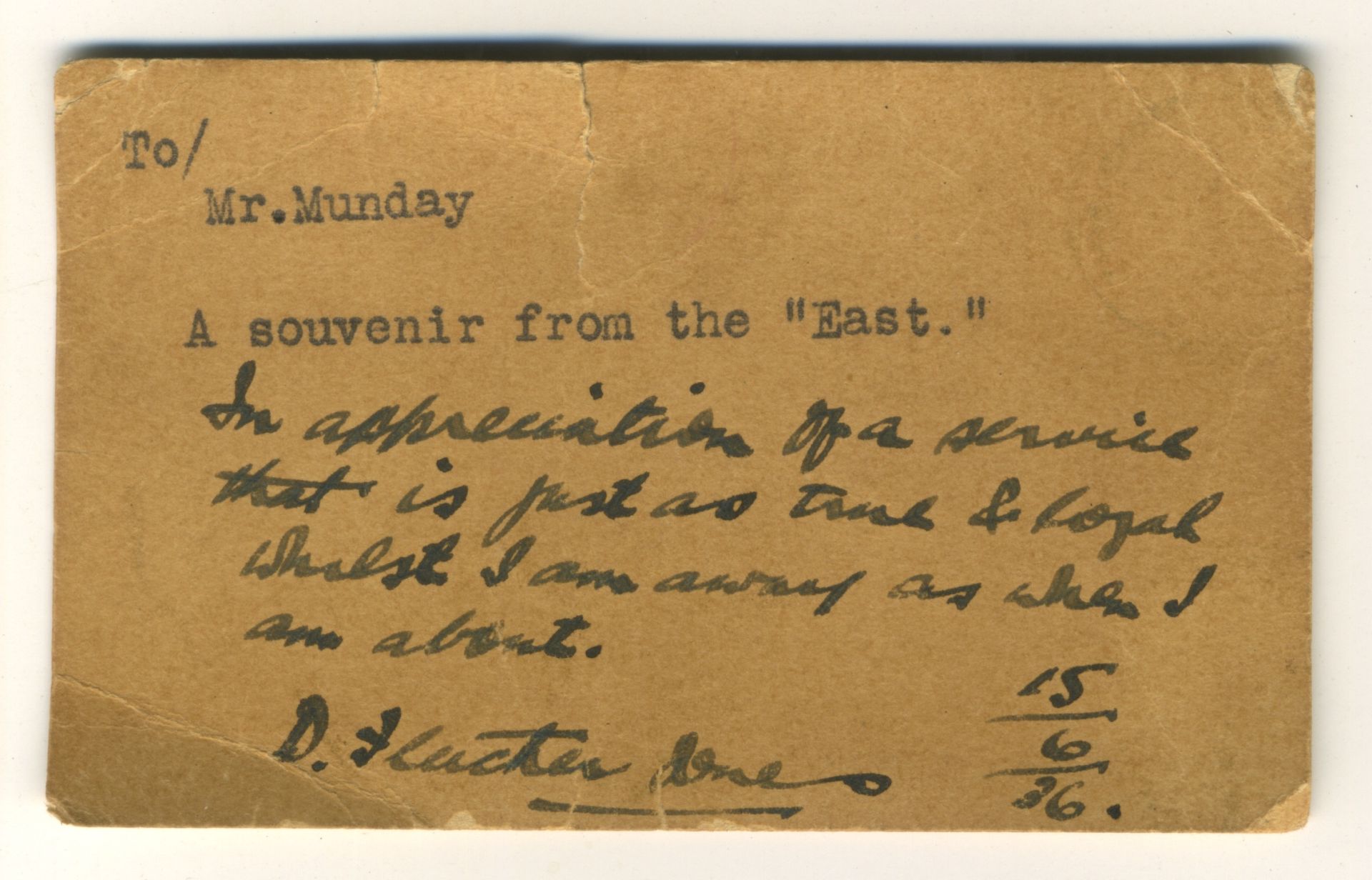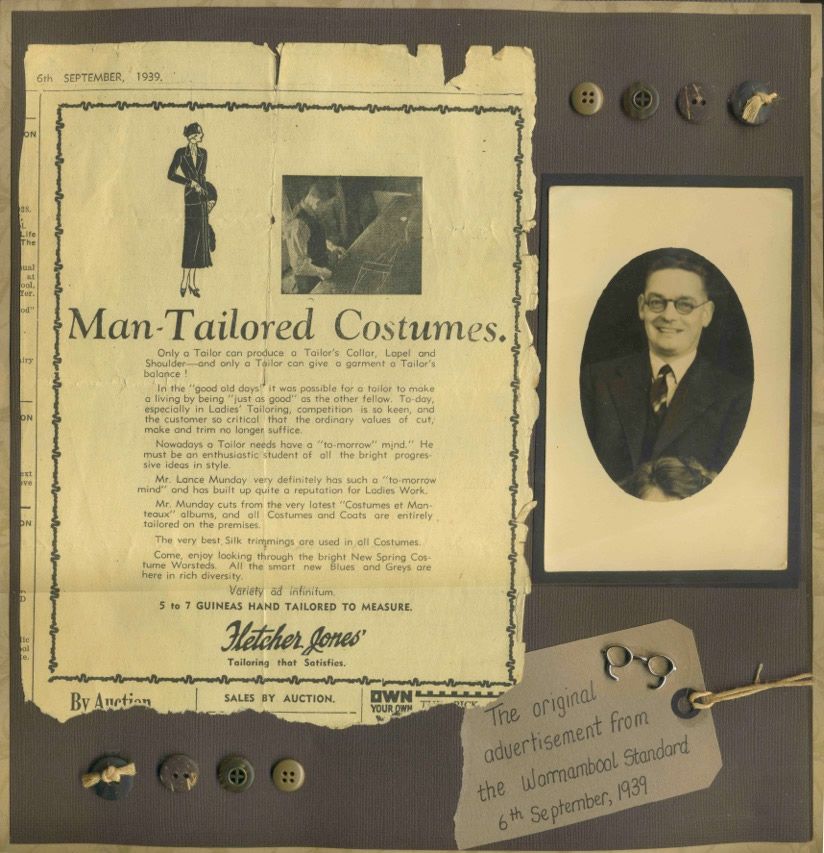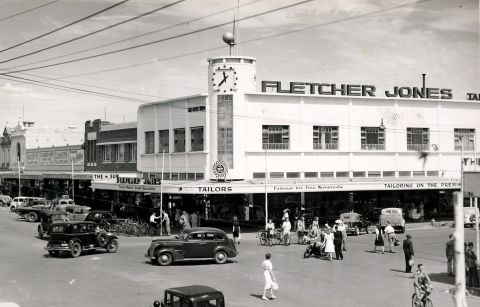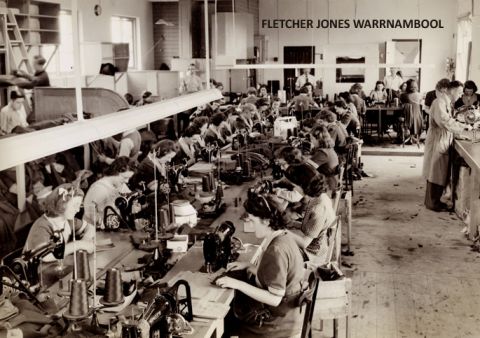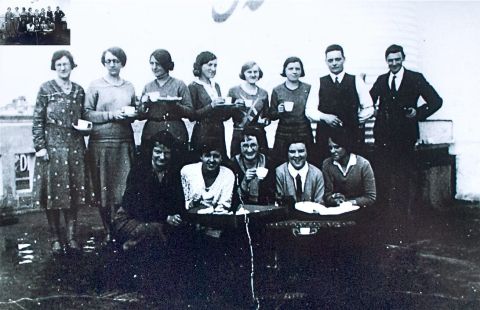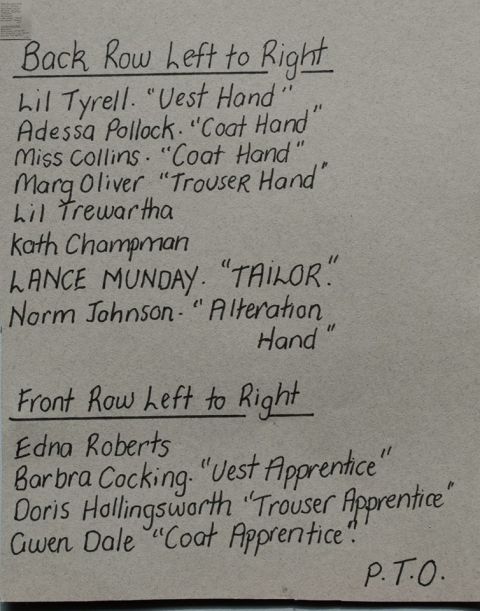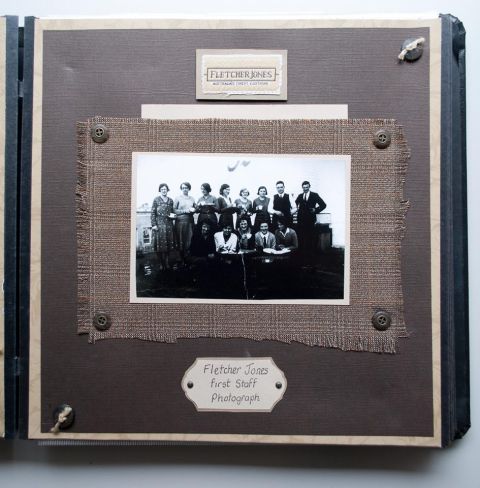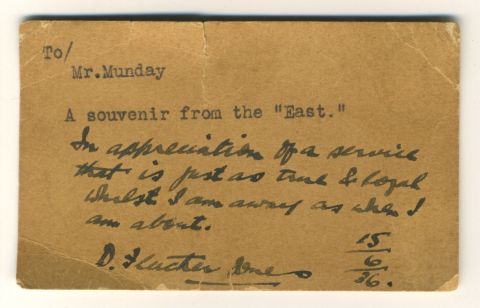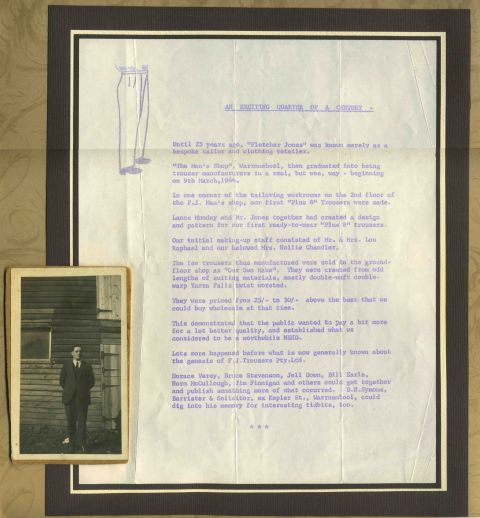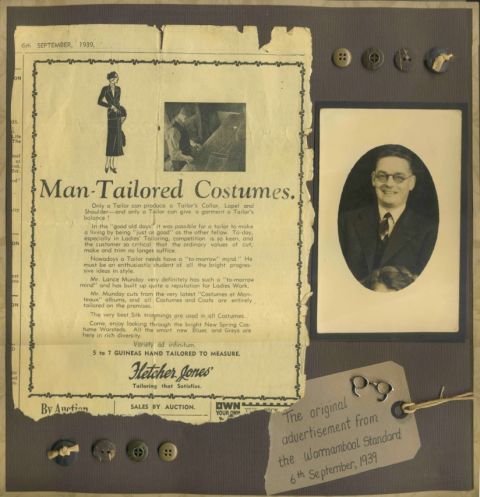According to Fletcher's autobiography Not By Myself, it was an alcoholic tailor called Charlie, that blew into Warrnambool for a short time during the depression years and suggested Fletcher make just trousers. At the time, Fletcher Jones' small band of tailors were making "men's suits, costumes, bench trousers, evening suits and jodhpurs" in Warrnambool above the Man's Shop at the corner of Liebig and Koroit St. Tailoring was a tough trade to make a living in during those years. Charlie told Fletcher that he was wasting his time waiting for farmers to come in for their suit fitting and that the workroom was filled with half finished suits hanging around waiting for customers to come and try them on. He told him to tell his tailors to make ready-to-wear trousers to sell in the FJ shop with a plain ticket that said OUR OWN MAKE. Fletcher sceptically took Charlie's advice and to his surprise found that the strategy worked as he could pass on the savings to customers and trade started to boom as the cheaper prices started to attract men from all over the district. "Gradually suits took the back seat and our new Nothing-But-Trousers signs were hung out" said Fletcher.
Thus began Fletcher Jones ready-to wear tailored trousers business.
Then World War Two broke out and in 1941, the Department of Supply visited Warrnambool and ordered Jones to turn part of his business to the manufacture of trousers for the army. This request to Fletcher quickly changed to requesting he make high quality trousers instead for the 'man on the land'. The Primary Producers Association had put considerable pressure on the government because the only wartime austerity trousers they could purchase at the time were expensive and of such poor quality that they wore out in the saddle in two weeks!
FJ struck a relationship with Jim Vicars Mills who supplied a specially woven cloth of fine merino wool that they called Coverdine. FJ tailor, Lance Munday led the development of the Plus 8 trousers design that over the next generation would become almost a national uniform for the Australian man. The trousers were fully-draped, resembling a divided skirt hanging from the waistband. Because eight inches of extra cloth were cut into the drape, they were known as ‘plus-eights’. The fabric was of a high quality and they kept their shape despite the stresses and strains of horseback. Careful attention was given to craftsmanship and quality control over stitching, cut and finish. The trousers proved to be incredibly popular, though FJ was sometimes despairing when he saw men wearing ill fitting FJ trousers. FJ developed an obsession for quality and value and that included good fitting trousers. He insisted all stores supplying his trousers ensured that customers had a personal fitting.
FJ then turned from saddle trousers to sports trousers and demand increased. The quality, fit and value of the trousers in a post war setting with limited supplies cemented their popularity. Amazingly men used to queue around the block for a pair of FJ trousers when they opened their first retail store in Collins St, Melbourne and supply could not keep up with demand!
In 1946, FJ made an intensive study of trouser factories in the USA, Canada, Britain, Sweden and Switzerland. At the end of the following year, unable to keep up with the expanding production at the Man's Shop in Leibig St, FJ purchased 5 acres of quarries and a rubbish dump on the eastern edge of Warrnambool to expand his operation. Seventeen war surplus army buildings moved on site would become the Pleasant Hill factory. At the same time, the name FJ and Staff Pty. Ltd was registered. And the following year in 1948, trouser production began at Pleasant Hill.
Thank you to Lance Munday's granddaughter, Michelle Cust nee Munday, for information and images shared from her beautiful scrapbook.

